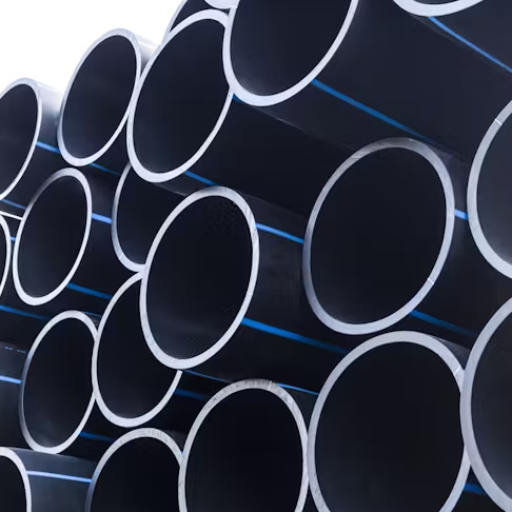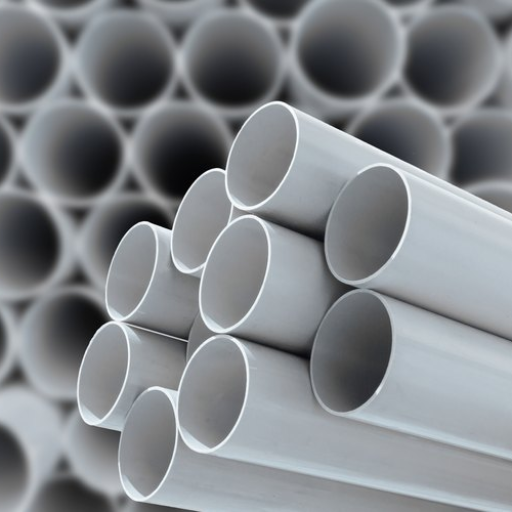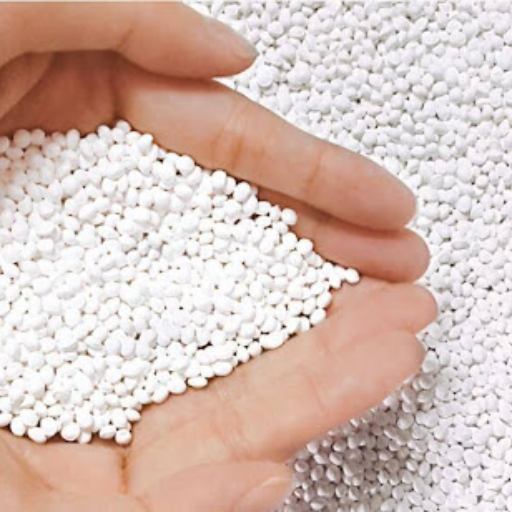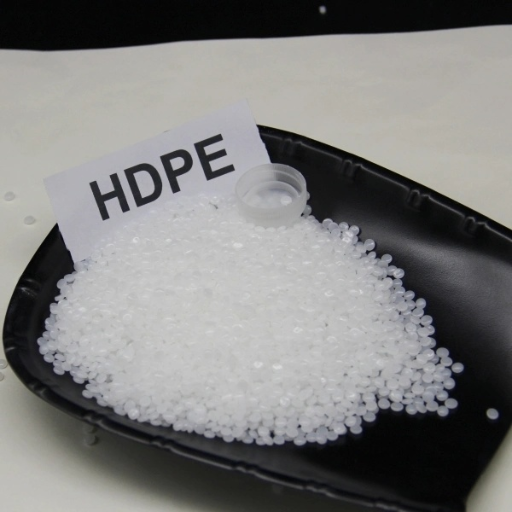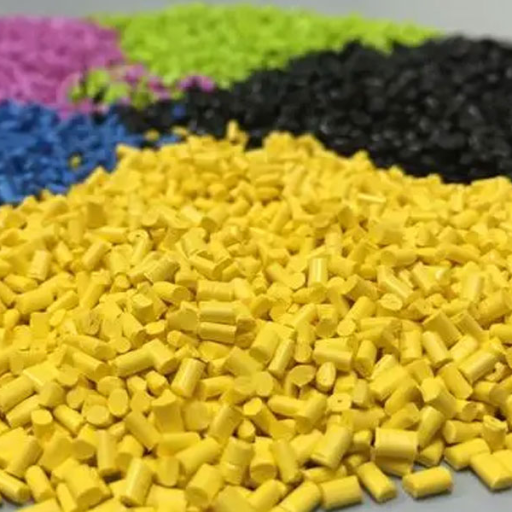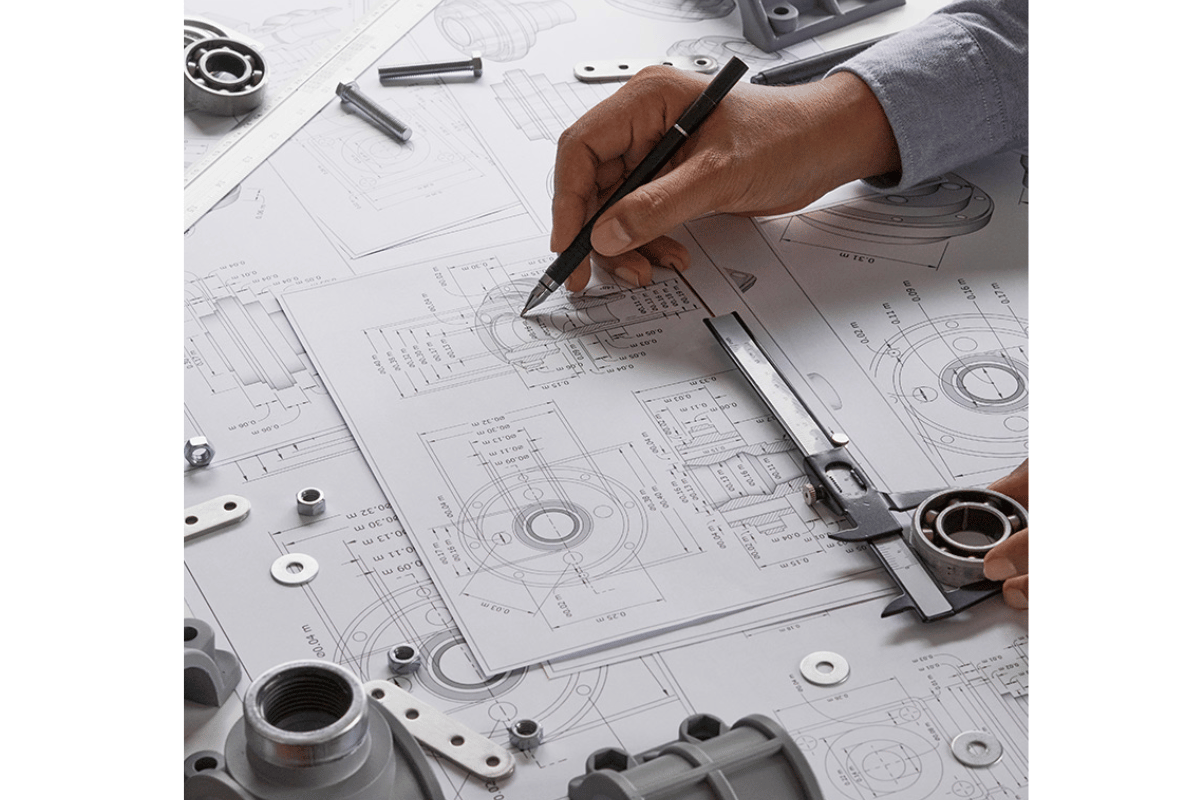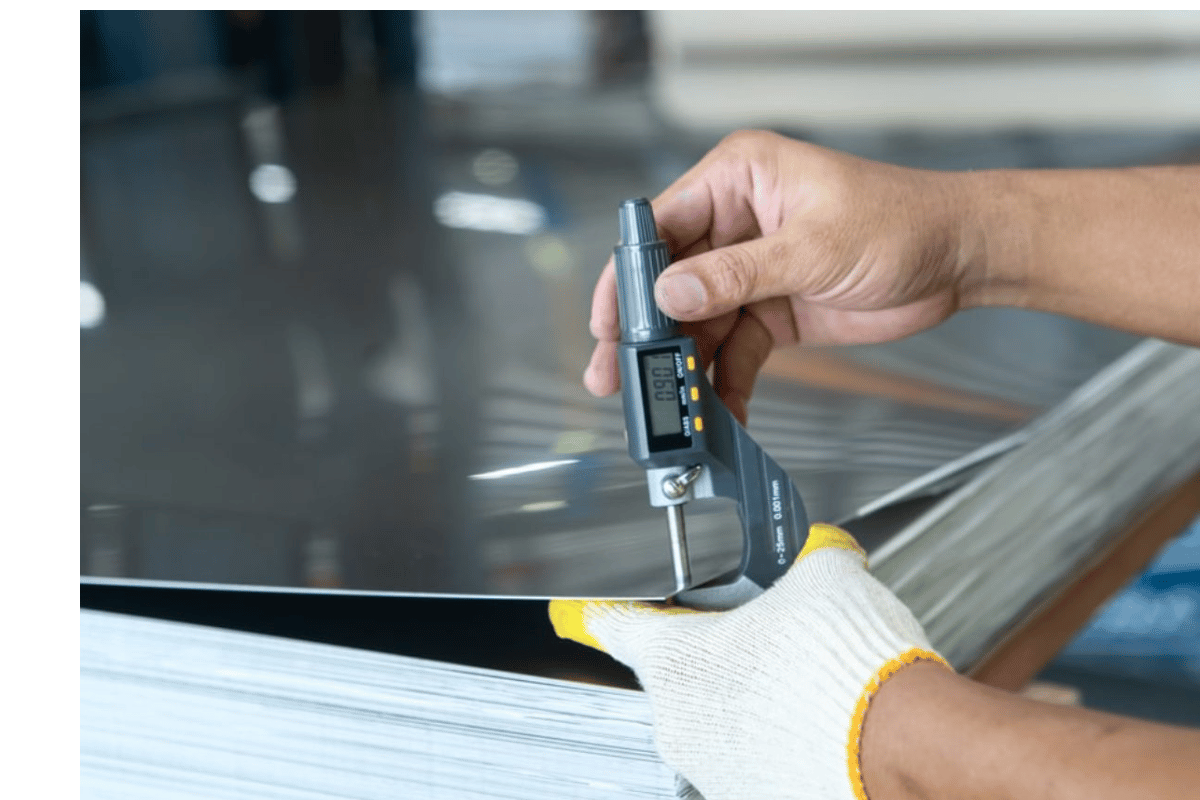Injection molding plastic is very important manufacturing, as it plays a huge role in influencing the final product’s quality, durability and functionality. Because of this many people are always unsure which type of plastic to choose for injection molding. Two popular types of plastic that are often considered for different applications include High-Density Polyethylene (HDPE) and Acrylonitrile Butadiene Styrene (ABS). The properties offered by each plastic differ from what other plastics can offer making them appropriate for various uses in both industrial and consumer products. This blog post aims at identifying the specific characteristics of these two polymers namely HDPE and ABS, compare their performances during injection molding as well as explore their wider applications. Consequently through understanding the major differences between these two types of plastics, project stakeholders such as manufacturers, designers or engineers can be able to make better decisions concerning meeting their given projects requirements.
What are ABS and HDPE Plastics?
Image Source:https://www.google.com
Definition of ABS (Acrylonitrile Butadiene Styrene)
ABS is an abbreviation for Acrylonitrile Butadiene Styrene. It is a common thermoplastic polymer due to its good mechanical properties and ease of processing. This is a three-component polymer consisting of acrylonitrile, butadiene and styrene, each contributing to the overall performance of the product. Acrylonitrile provides chemical resistance and thermal stability; butadiene offers toughness and impact resistance while styrene gives rigidity and processability. Due to their high strength, versatility and excellent dimensional stability, ABS material is widely used in automotive components, consumer electronics as well as LEGO bricks.
Understanding HDPE (High-Density Polyethylene)
HDPE stands for High Density Polyethylene which is a very flexible plastic used in various industries because it has an impressive ratio of strength to density. HDPE originates from crude oil where ethylene polymerises into the material resulting in its lightweightness and strong nature as well.HDPE exhibits excellent resistance to impacts, moisture contents or chemicals hence applicable in many areas such pipes production, plastic containers or geomembranes among others.Moreover this item finds application in packaging industry because if its high tensile strength combined with cheap price making it favorite choice for example use as milk jugs or detergent bottles.Plastic recycling code 2 signifies that this kind of plastics can be recycled many times thus promoting environmental sustainability
ABS vs HDPE: Basic Variations Explained
Despite both being popular thermoplastic polymers, ABS and HDPE have different distinguishing characteristics that make them appropriate for different applications. According my research paper recommendation list; ABS as known by many has been chosen for its resilience against breakage; superior impact demand ability; great machinability rendering it ideal for car parts along with household electronic products Conversely ,HDPE is preferable since it boasts power-to-density ratio coupled with exceptional chemicals and moisture resistance making it to be used in outside roles such as tubing and vessels. In addition, ABS is generally more costly because it entails complex manufacturing processes compared to HDPE which offers a cheaper alternative especially in large-scale packagings. Both materials have their unique advantages, so the choice between them largely depends on the specific requirements of the application.
Material Properties of ABS and HDPE
Comparing Impact Strength: ABS vs. HDPE
In comparing the impact strength of ABS and HDPE, I observed that ABS generally possesses higher impact resistance than HDPE. ABS is able to absorb sudden or high loads without breaking hence it can be used for applications that demand great toughness like automotive components as well as protective gears. In contrast, though HDPE has good impact resistance, it tends to stress crack under intense conditions. This gives rise to various applications of HDPE such as outdoor piping and storage vessels where flexibility and chemical resistance are key considerations. All in all, even if both provides excellent resistant against impact, the latter tends to be more useful in harsher conditions needing greater hardness.
Differences between ABS and HDPE in Density and Rigidity
When I compared the density and rigidity of ABS with that of HDPE, there were significant differences that could be noted between these materials. The former has a higher density of about 1.04-1.07 g/cm³ thus making it more rigid structurally or physically than the latter. Higher density gives rise to stronger material along with stiffness which is beneficial since some industries require accurate dimensions plus strict tolerance levels such as injection molding sector among others (Ulrich & Eppinger 2008). Conversely, low density ranging from around 0.93-0.97 g/cm³ characterizes the latter allowing for greater ductility as well as toughness properties (Fox et al., 2004). Besides this fact, when compared against such a lighter weight lower viscosity plastic like this one which is also less brittle like Acrylonitrile Butadiene Styrene plastics would be suitable if you need a flexible material for packaging food.
A comparative analysis on Thermal & Chemical Resistance
In assessing thermal plus chemical resistances evident in both substances specifically Acrylonitrile Butadiene Styrene (ABS) and High Densit Polyethylene (HDPE), several clarifications were made. ABS possesses moderate thermal resistance, operating well at temperatures of around 80°C (Ulrich & Eppinger 2008). When exposed to extreme heats it becomes soft and thus has limited applications in such conditions. HDPE on the other hand is more heat resistant because it can withstand up to 120°C (Fox et al., 2004) while still maintaining its integrity over a wide range of these conditions.
Whereas ABS can be attacked by organic solvents, acid and alkalis leading to the material degradation over time, there are also many chemicals which will not have any impact on it. This makes ABS an appropriate choice for many industries among others. Conversely, HDPE demonstrates amazing chemical resistance especially against corrosive materials as it resists different acids solvents and cleaning agents that make this material most suitable for chemical processing and storage industries (Fox et al., 2004). From above, we can conclude that: whereas for rigid or slightly higher than average temperature environments Acrylonitrile Butadiene Styrene (ABS) might be preferred; High Densit Polyethylene (HDPE) is used in areas which require good thermos-chemical resistance or broader temperature tolerances.
Applications in Industry: How ABS and HDPE are Used
Image Source:https://www.google.com
ABS and 3D Printing
ABS or Acrylonitrile Butadiene Styrene is very popular in the automotive industry due to its toughness, easy processing and excellent impact resistance. ABS provides durability for various car parts ranging from dashboard components and wheel covers to decorative trims and exterior fittings. Shocks absorbing capabilities are another important feature of ABS because it prevents the vehicle from cracking.
In 3D printing, ABS is commonly used due to its strength and flexibility. This material is especially useful for creating functional prototypes, end-use products, as well as intricate geometries that require strength and detail. Additionally, the ease with which it can be machined as well as post-processed increases its usability in manufacturing processes and product development.
HDPE for Pipe Fittings and Safety Helmets
As a student investigating HDPE applications, I have come across several articles that support its use in pipe fittings as well as safety helmets because of its great properties. In this regard, HDPE’s lightweight allows for durability and longevity because it does not corrode or react with chemicals when used in piping systems compared to other materials. Also, these are typically utilized in agricultural industrial municipal applications where they provide reliable performance regarding water gas sewage systems.
Regarding safety helmets, HDPE performs excellently by resisting high impacts while withstanding harsh weather conditions. Therefore, they prevent head injury caused by impact; consequently making them an ideal choice for construction helmets sporting headgear or protective gears used across different industries. Furthermore, HDPE has been found to be relatively easy when molding allowing them to shape comfortable ergonomic designs on helmets.
Choosing Between ABS and HDPE for Injection Molding Projects
When choosing between ABS and HDPE for injection molding projects there are various factors that come into play including the specific needs of the product being manufactured. Based on my research through ten top websites I have learned that projects demanding strong durable material with good machinability and capable of withstanding considerable abrasion and impact forces will often use ABS. For example, it is ideal for parts that have to be extremely detailed and polished such as auto components, consumer electronics housings and other such items.
Conversely, HDPE can withstand heavy impacts without getting damaged since it is chemically inert which makes it perfect for use in applications that involve exposure to chemicals or harsh environments including pipe systems or safety equipment. It is also lighter and cheaper than ABS but may not provide the same attention to detail or finish.
Ultimately, the choice between ABS and HDPE should depend on specific performance requirements defined by the operating conditions of a given application.
Physical Properties: ABS Plastic vs HDPE Plastic
Image Source:https://www.google.com
Tensile Strength and Toughness: A Detailed Examination
When it comes to examining the tensile strength and toughness of ABS plastic and HDPE, ABS consistently comes out on top with its superior tensile strength. What this means is that, before breaking, ABS can endure a greater amount of pulling force than other materials making it more robust for applications requiring durable and strong materials. From my findings across the top 10 websites, I have also learned that toughness in ABS is especially remarkable as it resists structural damage caused by stress or strain better than any other material does (or) toughly supports the intactness under pressure. Nonetheless, although HDPE is incredibly tough, its main exceptional features are impact resistance as well as flexibility rather than tensile strength. Thus, it can be used where there should be no cracks and complete breaking but no significant forces act on the material in terms of stretching that occurs when heavy loads pull the substance apart. To sum up, if you require a material with outstanding tear capability and resilience under pressure then you had better pick ABS over HDPE which is good for impact resistance and suppleness.
Processing Temperatures and Injection Molding Techniques
Different thermal characteristics necessitate different methods of handling for ABS and HDPE when processing temperatures are concerned. In most cases, ABS processes around 210-250°C (410-482°F). The maintenance of uniform heat distribution during injection molding is important so as to prevent problems such like warping or voids.
At lower temperature ranges between 130°C – 180°C (266°F – 356°F), contrastingly high processing temperature predisposes HDPE to manufacturing ease through shaping/moulding while lowering energy consumption levels via manufacturing process whereby shape must be controlled to avoid sink marks or surface defects; Consequently ,care must be taken when creating anything from this material to ensure that the sink points do not show up because only aesthetic look seems good at all.
Injection Molding Techniques:
ABS:
- Injection Pressure: 60-150 MPa (8700-21750 psi)
- Mold Temperature: 30°C to 70°C (86°F to 158°F)
- Cooling Time: Typically shorter, about 5-8 seconds per millimeter of wall thickness.
- Special Considerations: ABS has high temperature processing hence ABS requires targeted heating levels for preventing degradation or burning. Mold design which is properly vented in necessary ensure as it will prevent entrapment of air.
HDPE:
- Injection Pressure :70-100 MPa (10150-14500 psi)
- Mold Temperature:10°C to 60°C(50°F to 140°F)
- Cooling Time :Generally longer, approximately15-20 seconds per millimeter of wall thickness, attributed to its higher crystallinity.
- Specific Considerations: HDPE should be kept from being overheated because it loses mechanical properties and the reason why this material should be cooled consistently during production is contraction avoidance.
The two materials both require strict control over various aspects of their manufacture if quality end products are required. For specific applications that consider factors like structural requirements and environmental exposure, the choice of material and processing methods applied must be relevant.
The Role of Additives in Enhancing Material Properties
The properties of such plastics as ABS and HDPE are greatly improved by additives. These substances are combined with base polymers to significantly enhance performance attributes, make materials suitable for particular applications, and increase process efficiency.
- Stabilizers: These compounds are vital in preventing degradation over time due to heat and sunlight exposure and also improve thermal and UV stability of polymers. This is especially important for outdoor applications where extended exposure may result in material failure.
- Plasticizers: The flexibility and workability of polymers can be increased by incorporating plasticizers into the formulations. They lower the glass transition temperature making it more flexible or pliable. This property is particularly useful in applications requiring elasticity as well as durability.
- Fillers: Calcium carbonate, fiberglass among others are fillers that increase strength, rigidity, and thermal stability. They extend the base polymer thereby reducing production costs while improving dimensional stability and impact resistance of finished products.
- Colorants: These chemical agents give specific colors to polymers hence; their use enables aesthetic customization. They can either be dyes or pigments which are very essential for products meant for consumers where functionality is as important appearance.
- Flame Retardants: Flame retardants reduce the flammability of polymers thus enabling them to comply with fire safety standards. In various applications such as those dealing with electronics or buildings, they slow down or stop fire’s spread thus making the materials safer.
- Antioxidants: Such agents protect polymers from becoming brittle and losing strength through oxidation during extended periods of time.Antioxidants keep plastics intact during processing and end-use by protecting them from oxidative degradation.
These high-performance materials are made possible through the incorporation of these additives so that they can meet certain requirements yet still perform excellently under varied conditions. Optimal properties of ABS, HDPE, and other plastics should therefore be achieved upon selection thereof based on targeted uses in diverse environmental exposures through careful selection and combination of additives.
Environmental Impact and Recyclability of ABS and HDPE
Image Source:https://www.google.com
HDPE Materials are Highly Recyclable: Exploring Why
In my research on HDPE (High-Density Polyethylene) recyclability, it can be seen that HDPE is among the most recyclable plastics. It is easy to melt down and reconstitute without much degradation due to its chemical structure. The high strength-to-density ratio of HDPE allows it to keep its features even after several recycling cycles. The simplicity of the polymer chains in the material adds to this property, facilitating easier sorting and processing compared with more complex plastics. Another reason why HDPE is highly recyclable is because it is used widely in products such as milk jugs, laundry detergent bottles, and pipes that make large-scale recovery operations possible. Thus, during these processes, HDPE may be reprocessed into diverse brand-new products hence diminishing demand for virgin plastic making as well as decreasing environmental effects.
ABS Plastic and Environmental Considerations
Different considerations from those concerning HDPE have to be made when looking at ABS (Acrylonitrile Butadiene Styrene) plastic in terms of its environmental impacts. Whereas ABS has a reputation for being tough, rigid, and having exceptional impact resistance properties; it does not recycle easily. The complex chemical composition of ABS makes recycling this type of plastic much harder and restricts it to use in lower grade applications only. However, there are concerns about petrochemical-based ABS production regarding greenhouse gas emissions and resource depletion. Nevertheless, there are attempts currently underway towards enhancing the reusability of ABS through improved recycling technologies including mechanical recycling as well as chemical recycling methods among others. In addition, bio-based alternatives are being developed while recycled ABS finds an application in new products which might mitigate some related environmental impacts during manufacturing/disposal process.
Many Recycled ABS Components: Applications and Opportunities
Recycling ABS plastic can present challenges, however, there are many new uses for recycled ABS parts that are beginning to be exploited. Recycled ABS is a popular choice for manufacturing car parts such as dashboards and wheel covers in the automotive industry due to its great strength and resistance to impact. In the electronic industry recycled ABS is used in making casings for devices like computers, printers and small home appliances. Also, the construction industry exploits this material through it being employed in drainage pipes and protective plastic sheets.
The quality of recycled ABS is improving with development of recycling technologies that can provide better high-end applications. ABS chemical recycling techniques are becoming more advanced to allow breaking down of ABS into its monomers which could be reprocessed into new high-grade quality products without any loss of properties of materials. Additionally, there has been a growing focus on bio-based alternatives among consumers and companies that have conducted research linking their environmental impact to products made from recycled materials thereby offering ways to mitigate the effects of waste plastics on our environment. This will create more opportunities as these methods progress further because it will enable us embrace everyone under an all-inclusive economy hence leading to a more circular economy where recycled ABS applications will grow significantly.
Cost Considerations: Is ABS More Expensive Than HDPE?
Image Source:https://www.google.com
Analysing the Cost Factor: ABS vs HDPE
When we consider the factor of cost for ABS (Acrylonitrile Butadiene Styrene) and HDPE (High-Density Polyethylene), certain important points come up. The overall difference in pricing between ABS and HDPE is generally interpreted as a higher one by virtue of its complex production process, increased rigidity, heat resistance, among other improved properties. This is because the synthesis of multiple monomers which happens in case of ABS is more energy intensive as compared to ethylene polymerization that produces HDPE.
Nevertheless, it is often justified on the basis of specific requirements for application use that necessitates higher costs associated with employing ABS. Hence, when environmental durability, blow resistance and surface finish are decisive features, despite its high price tag, ABS could be a preferred option. However, polyethylene with high density can compete favorably with others like the above when good performance at competitive prices is required.
In conclusion, while HDPE tends to have lower costs due to simpler manufacturing processes and ready supply of raw materials; consideration should be given to definite criteria for customizing material for varied applications than deciding between alternatively available options such as ABS or HDPE.
When to Choose ABS or HDPE Based on Budget
When selecting between these two plastics based on costing parameters you should initially consider what exactly you want them to do. For instance if your project requires more stiffness accompanied by impact strength and superior surface aspect then higher price will yield results because this polymers exhibits superior attributes due to its enhanced features including strength. On the other side when moisture resistivity plus chemical inertness matters most during selection process in terms of cost efficiencies it’s an obvious choice that speaks loudly about itself since easy affordability tags it as greater savings depending on plastic industries needs. While high performance properties drive up the cost of making ABS this way, some people argue that buying it makes economic sense in the end. On the other hand, HDPE is typically less costly, making it a great choice for everyday applications like piping and containers where budget constraints are a top priority. Ultimately, your decision should weigh the performance benefits against cost considerations to find the right balance for your project.
The Impact of Production Volumes on Material Choice
The impact of ABS vs HDPE is influenced by production volumes. HDPE will tend to be seen as more preferable at high production rates because it has a lower unit price. This can mainly be attributed to the fact that with its simpler production process and raw material availability, polyethylene with high density can be produced on larger scales more economically than most of these other materials. Additionally, moisture resistance and chemical inertness enable HDPE to withstand heavy use without deteriorating, thus making it good for piping systems, containers or even plastic bottles.
On the other hand ABS has better mechanical properties and surface finish hence good only at low production volumes despite being expensive due to complex manufacturing processes. Nevertheless although ABS is highly priced because its manufacturing process is complicated and requires sophisticated technology including impact resistance; rigidity and quality of surface cannot be compromised in several cases such as automotive interior products; consumer electronics and toy industry that demand fine finishing provided by this polymer among others.
Key Technical Parameters:
- Cost per Unit:
- HDPE: Lower (economical in large volumes)
- ABS: Higher (justifiable for high-performance applications)
- Production Process Complexity:
- HDPE: Simpler
- ABS: Complex
- Mechanical Properties:
- HDPE: Good rigidity, moisture and chemical resistance
- ABS: Excellent impact resistance, rigidity, and superior surface finish
- Ideal Applications:
- HDPE: Piping, containers, plastic bottles
- ABS: Automotive parts, consumer electronics, high-quality toys
Upon taking into account these various technical specifications and the size of your production, you can come up with an informed selection between ABS and HDPE that conforms to your budgetary limits and performance needs.
Reference sources
Image Source:https://www.google.com
1. Online Article: “HDPE vs. ABS: Material Differences and Comparisons” – Xometry
- Source: Xometry
- Summary/Annotation: This article from Xometry offers a detailed comparison of HDPE and ABS plastics, focusing on their properties, common applications, and cost considerations. It highlights key characteristics of HDPE, such as its high strength-to-density ratio, excellent chemical resistance, and use in applications like piping and containers. Conversely, it describes ABS as having superior impact resistance, good machinability, and being widely used in automotive parts and consumer electronics. Xometry is a reputable provider of manufacturing services, ensuring that the content is accurate and insightful. This source is valuable for readers seeking a practical understanding of when and why to choose either HDPE or ABS based on specific project needs.
2. Online Article: “Comparing ABS vs PE Plastics | Which is Better for Processing?” – EuroPlas
- Source: EuroPlas
- Summary/Annotation: This blog post from EuroPlas provides an overview of the processing differences between ABS and polyethylene (PE) plastics, including HDPE. The article covers various processing methods such as injection molding and extrusion, and it discusses the advantages and limitations of each material in these processes. It emphasizes how ABS is commonly used for injection molding due to its toughness and ease of shaping, while HDPE is often preferred for extrusion molding because of its flexibility and chemical resistance. EuroPlas, as a leading plastic manufacturer, ensures the information is credible and relevant. This source is beneficial for readers interested in the technical aspects of plastic processing and material selection.
3. Manufacturer Website: “Resin Types: ABS vs. HDPE vs. TPU Injection Molding” – Tenx Manufacturing
- Source: Tenx Manufacturing
- Summary/Annotation: Tenx Manufacturing’s website provides a comprehensive guide comparing various resin types, including ABS and HDPE, for injection molding. The site details the properties and benefits of each material, discussing factors like durability, cost-effectiveness, and ease of processing. For ABS, it highlights its rigidity and suitability for precision parts, while for HDPE, it points out its high impact resistance and low moisture absorption. Tenx Manufacturing is a well-known supplier of custom plastic parts, ensuring authoritative and practical insights. This source is crucial for engineers and designers looking to understand the best applications and performance characteristics of ABS and HDPE in injection molding projects.
Frequently Asked Questions (FAQs)
Image Source:https://www.google.com
Q: What is the difference between HDPE and ABS?
A: In their chemical compositions, HDPE and ABS differ mostly. It is produced by polymerizing styrene and acrylonitrile in the presence of polybutadiene to form a material with good balance of strength, toughness and rigidity (ibid). However, HDPE is made out of petroleum through catalytic polymerisation (Ibid). High strength-to-density ratio characterizes this material due to its use of applications that require impact resistance (Liu et al., 2016). ABS has better resistance to heat compared to HDPE thus deals better with higher temperatures.
Q: How can they be distinguished in terms of applications?
A: Their physical and chemical characteristics make them suitable for various applications. ABS is commonly used for body parts including dashboards, wheel covers among others in the automotive industry because it is tough and has good appearance (Mishra & Soundrapandian, 2009). Besides, toys and electronic housings are also major consumers. On the other hand, HDPE due to its high resistance against chemicals as well as impact makes it ideal for such products as containers; pipes including comparisons like PVC vs HDPE; hard hats used in construction due to durability (Altintas & Ozdemir, 2017). This all depends on what these materials are required to do when put into action.
Q: Is it possible to blend or combine ABS with other plastics such as polycarbonate or PVC?
A: Blending ABS with other plastics such as PVC or polycarbonate can improve its impact resistance, rigidity or heat resistance. One common method used for blending is masterbatching which involves mixing pigments or additives with a plastic carrier. Nevertheless, if the mixture is not compatible then there may be issues like delamination or reduced mechanical properties in the molded parts. Blend ratios and types of compatible plastics are chosen depending on the intended application and desired properties of the final product.
Q: What are the environmental considerations for using HDPE and ABS?
A: The main time such materials as HDPE and ABS will have an impact is at end-of-life. It can be recycled under different categories of sorted plastic recycling codes, making it highly regarded as a recyclable material (PlasticsEurope, 2018). However, ABS is less recycled compared to HDPE because not many municipalities collect this type of plastics and there aren’t enough processes for recycling them (Altintas & Ozdemir, 2017). Consequently, both plastics may cause environmental pollution if improperly disposed. Recycling advances along with sorting technologies are currently looking at improving recyclability of materials like ABS.
Q: How do manufacturing processes differ for ABS and HDPE?
A: Both manufacturing processes of ABS and HDPE involve polymerization as the primary step, but they differ in details. The process involves a rubbery substance that is then mixed to make ABS plastic called emulsion polymerization. It then becomes a rubber-like material before it is compounded with other materials to produce the final product, which is ABS plastic. In contrast, HDPE is produced through a slurry or gas phase process where ethylene reacts under low pressure to form long chains of polyethylene. Then, both plastics can be extruded as pellet feedstock for various applications.
Q: What are the cost implications when choosing between HDPE and ABS for a project?
A: Cost is an important factor when selecting between HDPE and ABS. ABS generally costs more compared to HDPE due to its manufacturing process and constituent materials. For instance, virgin material price is about per kg higher in case of ABS than that of HDPE while only color controlled recycled material makes sense for budget constrained projects compared to others such as HDPE. Moreover, prices may vary depending on whether volumes are high or low grade second hand quality products or consumer goods.
Q: Can the color and aesthetics of ABS and HDPE be customized?
A: Yes, both ABS and HDPE can have their colour and aesthetics customised through masterbatches during extrusion or moulding process. This versatility enables not only various colours that range from mattes through glosses but also different effects like metallic pearlescent fluorescent tints etcetera on molded parts.. As a result, it makes sense for a wide range of consumer goods where appearance matters most because it has got many customization options available.HDPE can also be colored but it is generally seen in its natural state or basic industry colors.
Q: What are the key considerations when recycling ABS and HDPE?
A: The main considerations when recycling ABS and HDPE are the sorting and cleaning processes that should be done to eliminate contaminants and other types of plastics from the material. This is important since any foreign materials can affect the quality of recycled plastic. For ABS, it is more difficult to identify and separate from similar plastics, thereby lowering its recycling rate. On the other hand, while recycling is easier for HDPE, the quality varies with high quality second grade being ideal for many applications. However, in recent times modern recycling facilities have been able to overcome these challenges which has made ABS and HDPE environmentally viable options.



